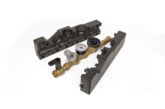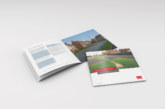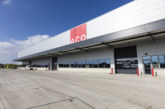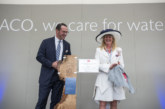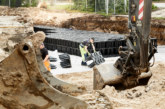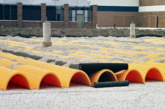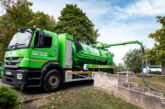Martin Lambley from Wavin discusses Sustainable Drainage Systems and the requirements of Sewers for Adoption 8, which are due to be implemented in England later this year.
The Sewers for Adoption 8th edition is significant as for the first time it will include details of some SuDS (Sustainable Drainage Systems) components which will be adoptable. This new guidance will give Water and Sewage Companies (WASC) greater freedom and obligation to adopt a wider range of surface water management elements. These changes mean it may be easier for developers to deliver the drainage plans required by planning as the thorny issue of ownership and long-term maintenance is removed, as the surface water drainage will be adopted by the WASC.
Some water companies are already working to reduce risk of sewer pipe overflow during high rainfall and increase capacity for new developments by encouraging the use of SuDS. However, until now, there has been no formal approach to how they should be adopted. It is generally thought that this lack of certainty and the risk associated with maintenance has prevented them being implemented on a wide scale. The Flood and Water Management Act 2010 introduced SuDS Adoption Bodies (SABS) to approve and adopt surface water drainage arrangements for new developments but whilst this is now in place in Wales it has never been implemented in England.
As a result, Water UK has worked with a wide range of stakeholders to develop new guidance to adoptable surface water sewers. This new guidance (Sewers for Adoption 8) was published for information only in July 2018. The full version is expected to be implemented later this year following its approval by Ofwat.
Sewers for Adoption 8 will provide greater clarification on standards for adoptable sustainable drainage systems. It is likely that this will pave the way for a greater uptake of SuDS which can provide a range of benefits including water quality, increased bio diversity and improved amenities for local communities in addition to managing the quantity of surface water.

Key changes in Sewers for Adoption 8
• Under the new guidance, English water and sewerage companies will be given greater freedom to adopt a wider range of sewer types including some sustainable drainage systems.
• Compliance with the current version of Sewers for Adoption is voluntary. Once the new Sewers for Adoption 8 has been approved by Ofwat, water and sewerage companies will be required to comply with the guidance where sewers are offered for adoption by developers.
• The new guidance includes standards on the flood risk performance that is expected for new developments, which should be able to deal with a 1:100 year rainfall events including an allowance for climate change.
• Sewers for adoption 8 refers to the CIRIA (Construction Industry Research and Information Association) SuDS Manual (C753) as best practice guide for designing SuDS.
Key points for design and planning of SuDS
• The National Planning Policy Framework (NPPF) expects that SuDS should be used as first preference in developments of any size. Specifically, priority should have been given to the use of sustainable drainage systems in areas at risk of flooding.
• It is possible that water companies may be able to deviate from the sewers for adoption 8 guidance to some extent and if so, it is likely that this will be set out in the final published version. Full details of adoption guidelines should be obtained from the relevant water and sewerage companies once available.
• Early initial engagement with water companies (during master planning or reserved matter stages) will ensure they are satisfied that the proposed minimum standards of operation and maintenance are suitable for adoptable elements as well as connecting non adoptable elements of the system allowing for smooth adoption of the system.
• Drainage systems should be designed to deal with up to 1:100 year rainfall events including an allowance for climate change.
• The updated SuDS Manual, published in 2015 by The Construction Industry Research and Information Association (CIRIA) provides ‘best practice’ guidance for the planning, design, construction, operation and maintenance of SuDS.

Geocellular structures for SuDS
Geocellular structures can be utilised as part of a SuDS design to help allow enough capacity for a 1:100 year rainfall event. When combined with landscaped elements, this will provide opportunities for a design which adheres to the four pillars of SuDS as set out in the CIRIA manual — water quantity, water quality, biodiversity and amenity. Creative planning and design of a system, which integrates a flexible and modular geocellular solution with landscaped components, can help to overcome some of the typical issues experienced by designers, including lack of space and existing site constraints e.g. existing pipes which are typical of brownfield sites.
Key considerations for specification of geocellular structures for SfA8
• Approval by BBA or another recognised body.
• Storage volume (% open floor space).
• Lateral and vertical access for inspection and cleaning equipment including channel size and number of vertical access points required.
Q-Bic Plus
Wavin’s Q-BIC Plus has a proven track record of installations across Europe and BBA approval for trafficked and non-trafficked applications, allowing it to be specified, installed and adopted with confidence. Its specific features include the most open tank design on the market, with 70% open floor space allowing easy access for inspection and cleaning. The lightweight units are flexible and easy to carry and install, cutting installation time on site.


